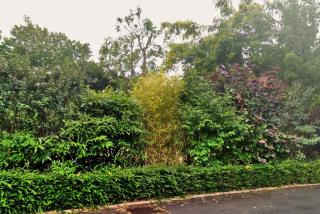

Setting up a mixed hedge fulfills all the functions of a normal single-species hedge, and provides an added aesthetic touch to your garden that is quite unique all year long.
Unlike conventional single-variety hedges, natural mixed hedges will grant a host of different colors, shades and shapes depending on the species.
Here is how to set up a natural hedge:

A rule of thumb is to plant one shrub more or less every yard (every meter).
Generally, a proportion of ⅓ evergreen to ⅔ deciduous is best.
However, if you’re looking to be visually cut off from neighbors and passers-by in winter, reverse this ratio, or even go for 100% evergreen shrubs.
It makes sense to repeat each species at least twice along the hedge: this will make it seem balanced and homogeneous.
But any single species shouldn’t appear more than 4 times in the hedge.
Among the most beautiful, common, and easy to care for, one can find:
See also all the evergreen shrubs well suited to growing evergreen hedges.

Creating a mixed hedge also has the incredible advantage of increasing your garden’s biodiversity.
Thanks to this hedge, you’ll reduce the impact of diseases and won’t need as many treatment products that are often bad for the environment.
What’s amazing is to turn a hedge into a boon for both neighbors, while still protecting your privacy. Select plants that you can use for cooking, fruits or pastries and jam… neighborhood relationships will never have gotten any better!
Try planting :
 Red berry hedges (raspberries, gooseberries, red, white and black currant). These might get a bit thin in winter, aim for double or triple rows and accept that their pruning isn’t as stringent as it may be in a normal berry orchard.
Red berry hedges (raspberries, gooseberries, red, white and black currant). These might get a bit thin in winter, aim for double or triple rows and accept that their pruning isn’t as stringent as it may be in a normal berry orchard.This will maximize your garden for productivity, biodiversity, and sheet pleasure of involving people around you with your special gift in gardening!
Read also on caring for hedges:
These really stand out in the neighborhood and make the garden feel full of life!
I live in Nova Scotia and am looking for blackthorn saplings, for hedgerows. Do you know of anyone that sells them in Canada?